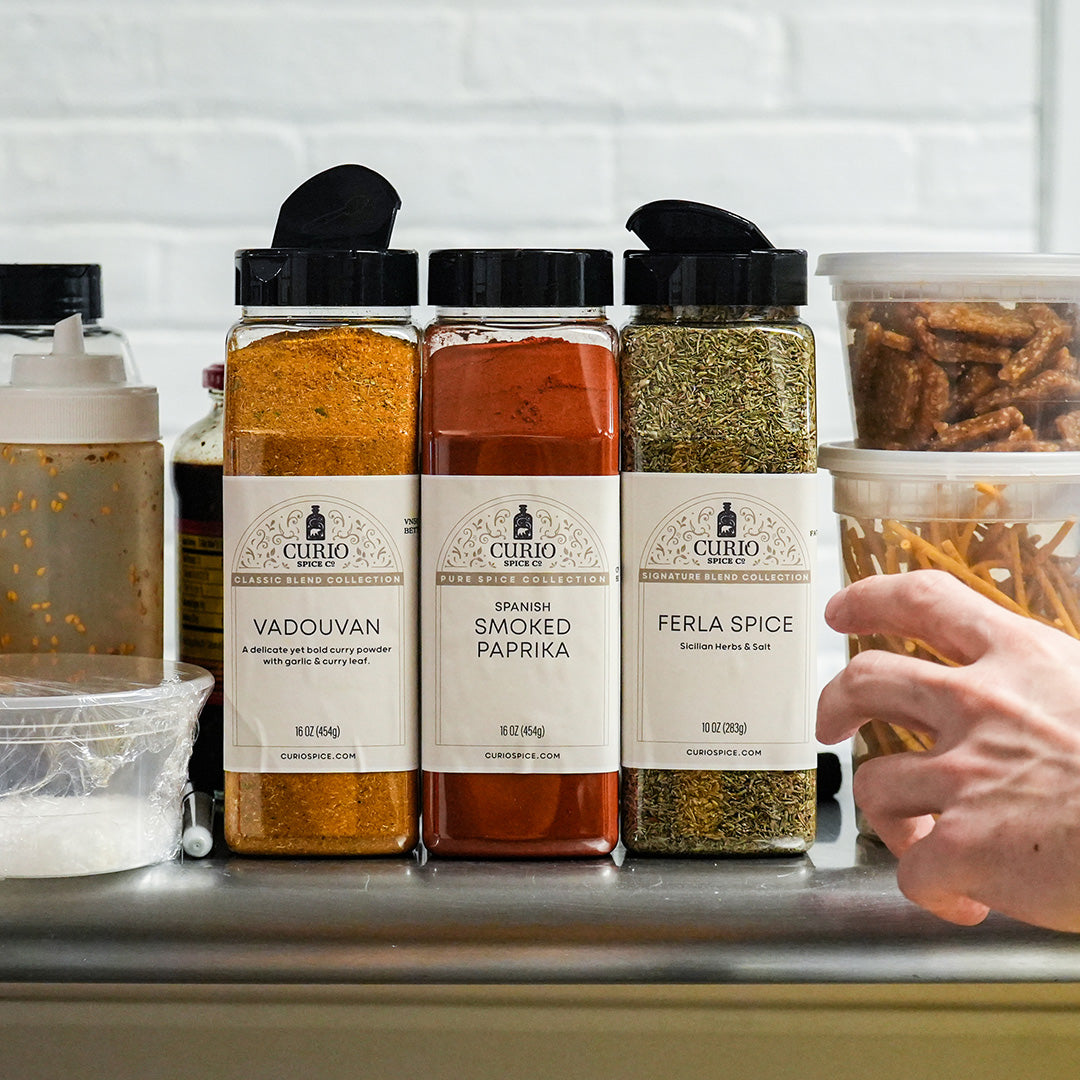The Story of Curio's Tins: Forever Recyclable, Forever Classic
Even before I started my business back in 2015, I remember staring at an antique saffron tin that sat on my desk, filled with pens and other office detritus. It sat on my desk as a reminder of what packaging can be – a beautiful object, useful beyond its original use.

When launching Curio, one of the first bits of research I did was find a spice tin manufacturer to try and continue a legacy of packaging spices in metal tins, which can either be recycled or reused. The same could be said of glass and plastic, both of which are used ubiquitously in the spice industry, but there is something distinctly old-world and classic about the metal tin.
I found a metal fabricator based in Pennsylvania near where my mom grew up. I cold called and got to chatting with one of their reps named Tony (who is still there today!), who told me about the very high minimums needed for an order. In explaining my new business and the plan for it to grow over the years, I convinced him to decrease the minimum and sell me a smaller quantity of empty spice tins (also called ‘cans’) and lids so I could get started packing and selling my product. It was a risk for both of us – he was making an exception to the rule, and I was still spending a large sum of money for my start up spice business on empty containers that still needed labels.
The company we source our tins from is called J.L. Clark, based in Lancaster, PA, known for its Amish community. It's likely that you already have some other items manufactured by this company in your cupboard, as they are famous for printing McCormick’s iconic Old Bay Seasoning tins. The company is over a century old, and in 2012 received a sustainability award that makes them the first North American Metal Lithographers in sustainable printing.
In selecting this style of packaging from this American company for our signature line, we are committed to not only supporting a US business and preventing excess carbon emissions resulting in sourcing from Asia (where most packaging manufacturers are based) but also we are committing to a material (steel) that is endlessly recyclable, unlike plastic. Our next most common material for packaging here at Curio is glass, which is also endlessly recyclable.

For the first time in the history of Curio, we’re now offering pre-printed tins! This is a mammoth step for us both in the efficiency of our spice blend manufacturing (yes, we’ve been labeling your spice tins by hand for 7 years…) as well as in the overall look of our brand. We worked with a small, women-owned branding agency in Maine to help us develop our new look, since committing to pre-printed tins meant literally filling our warehouse space with the order (minimums are different for pre-printed tins). Thanks to the wonderful team at Pulp + Wire in Portland, Maine, we were able to evolve and elevate the Curio brand through this new metal packaging – a material that is otherwise a rare choice in today’s modern food industry but which speaks to the rich history of honoring spices as precious, glamorous ingredients in your pantry.

Our newly printed signature tins have just arrived and I am so proud to continue working with this company. On my recent visit to the plant, I got to see behind the scenes the intricate process of printing the thin sheets of steel that then get folded into our final product. Each sheet is printed with layers of different color ink, and in our case, over top of a metal sheen that looks gold. Brian Craig (seen here) was the press operator on our order and has been with the company for 34 years. He showed me the calendar by his desk and how he is excited to retire next year! Given he’s been working there about as long as I’ve been alive humbles and inspires me; there is simply so much time involved in the craft of making beautiful things. The sound of the press is impressive – loud and industrial, clanking and banging and thumping as there are a dizzying number of wheels and parts that function simultaneously in an oily ballet to process the thin sheets of steel that get laid with delicate layers of paint and then baked in a slow conveyor belt system the length of half a football field. The aroma of the plant was a satisfying art-studio meets factory that reminded me of the high-end silk weaving factory I visited in India back in 2014 (weird how the sheen of that fabric in my memory mimicks the sheen of these steel sheets). I could’ve spent all day in there watching the machines churn out these sheets of metal packaging, so mesmerizing and enchanting was it all.









Thanks for your kind support, Debbie! We love our tins, too -— their look, functionality, and the long history of packing spices in tins for freshness. Just a note that the tins are refillable, too. You can purchase your favorite Signature Blend in bulk size, then, with just a little patience and a funnel, refill the the tin over and again.
I literally searched the Interwebs to see whether metal spice tins generally are recyclable, in the context of having an empty Curio spice tin, and here you are! Just one more reason to love your company (I have a very handsome and delicious lineup of your metal tins in my cabinet and one sad empty one whose replacement has already been slotted in).
Such a wonderful story and product! Thank you for sharing! Excited to see these new tins on my shelves as I restock my spice cabinet!
Leave a comment